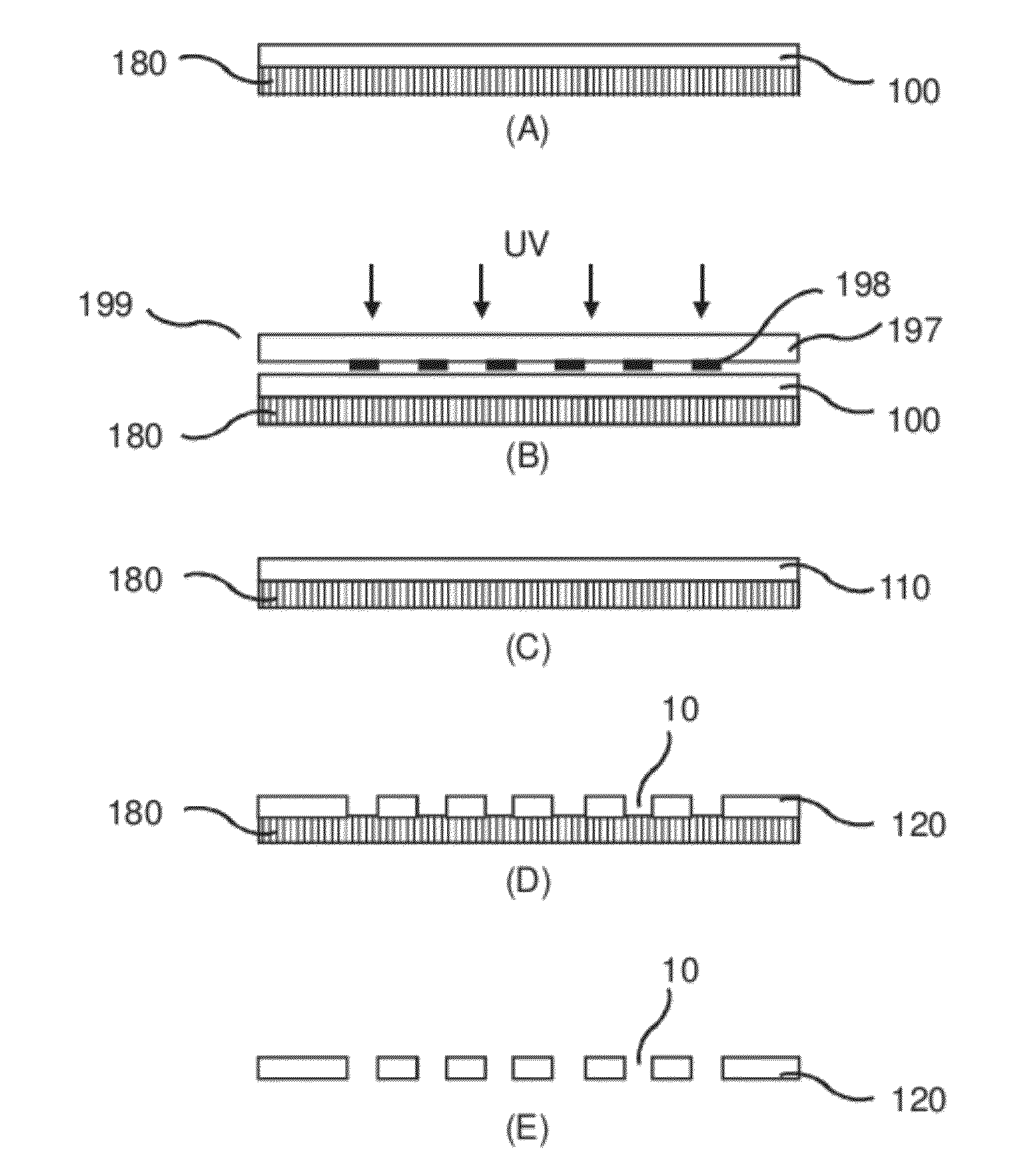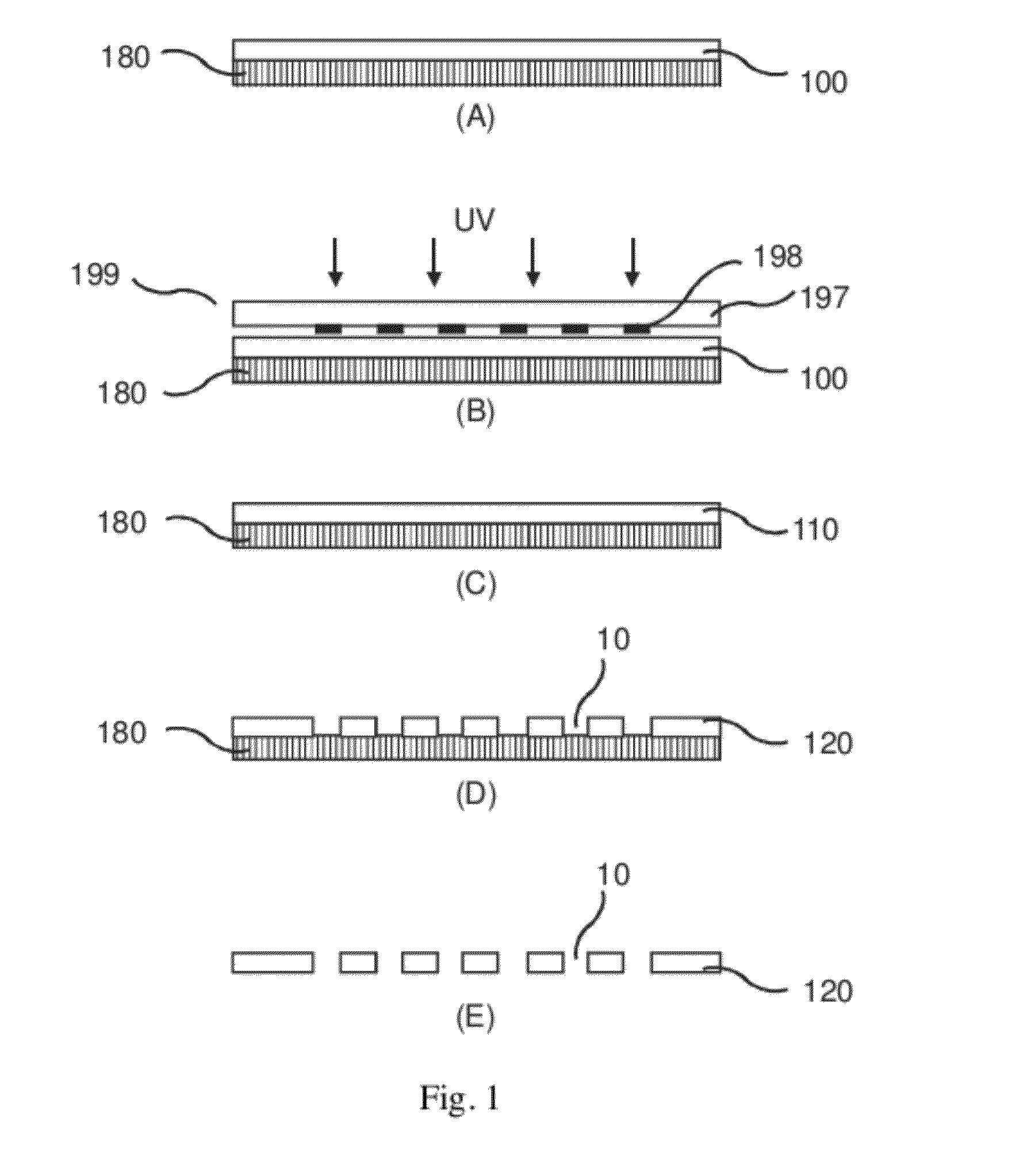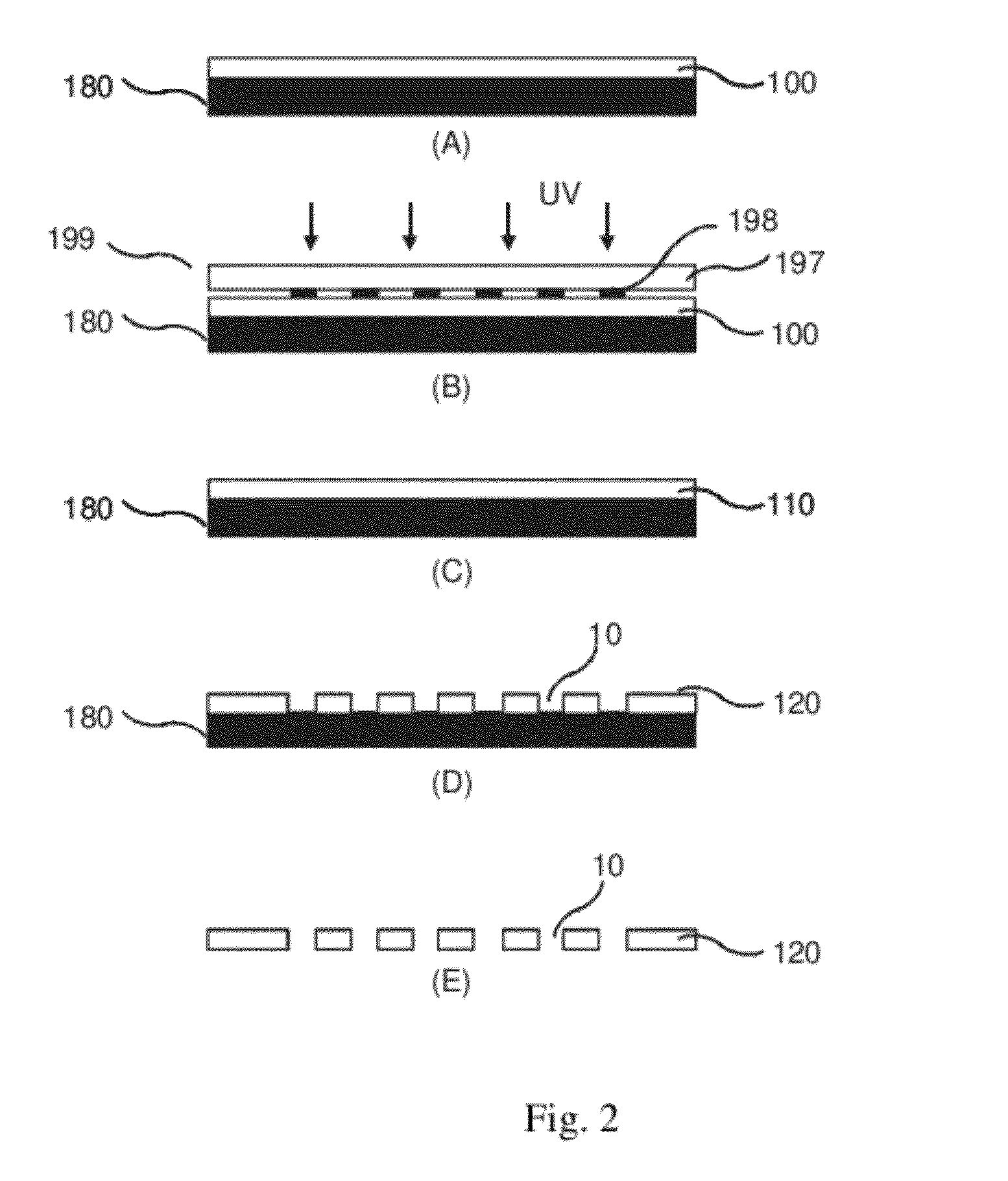Fabrication of Microfilters and Nanofilters and Their Applications
a technology of nanofilters and microfilters, applied in water/sewage treatment, osmosis/dialysis, photographic processes, etc., can solve the problems of large holes, fragile samples requiring structural support, and inability to meet the needs of use,
- Summary
- Abstract
- Description
- Claims
- Application Information
AI Technical Summary
Benefits of technology
Problems solved by technology
Method used
Image
Examples
example 1
Microfilter Fabrication Using Positive Resist Dry Film on Removable Substrate Such as Copper Foil
[0125]a. Laminate positive resist dry film on the copper[0126]b. Expose the positive resist dry film to UV though the microfilter optical mask. The parts of the positive resists that are exposed to the UV can be dissolved by developer.[0127]b. Develop the positive resist to form pores.[0128]c. Wet etch copper to release the microfilters.
[0129]2. Fabricate Microfilters from a Roll of Negative Resists Dry Film Using UV Lithography
example 2
Microfilter Fabrication Using a Roll of Negative Resist Dry Film
[0130]The negative resist dry film, such as PerMX™ 3000 series, is manufacture in roll form. To perform UV lithography of the resist in the role form as shown in FIG. 3 can simplify the fabrication. The method of implementation and steps of fabrication are described below.[0131]a. Between each exposure, an unexposed portion of a roll of negative resist dry films is advanced as shown in FIG. 5A. The films 102 laminated on removable substrate 182 are connected by rolls 175. They are stretched by rollers 170. The rolls advance by the distance appropriate for the optical mask and exposure system as indicated by arrow. During film advance, the optical mask 199 and support 191 are moved away from the films.[0132]b. During exposure, the stretched film 102 is pushed into the support 191 to provide additional tension and stability as shown in FIG. 5B. The UV exposure is performed after the optical mask 199 is placed on the films...
example 3
Fabrication Microfilters in a Roll of Negative Resist Dry Film and Applying Electrostatic Chuck to Fix the Films
[0161]In FIG. 12, the concept of using electrostatic force to hold the films secure is shown, but the rollers are not shown. In FIG. 12A, the configuration of the system is shown between exposures. The one or more laminated negative resist film 200 laminated to post bake support film 280 to form films 201. A stack of films 201 are stretched. The substrate structure consist of a support 292, an insulator 267 and a conduction layer 266. A clear conducting film 265 is placed on top of the film. Voltage 269 is set to zero and the circuit is open.
[0162]FIG. 12B shows the configuration during exposure, where a voltage 169 is applied between the electrodes 265 and 266. This allows the films to be tightly fixed between the electrodes to avoid motion. The x-ray mask is place adjacent to the electrode 265 and exposure is performed.
[0163]If the films are not pre-laminated, finish fab...
PUM
| Property | Measurement | Unit |
|---|---|---|
| diameter | aaaaa | aaaaa |
| diameter | aaaaa | aaaaa |
| angle | aaaaa | aaaaa |
Abstract
Description
Claims
Application Information
 Login to View More
Login to View More - R&D
- Intellectual Property
- Life Sciences
- Materials
- Tech Scout
- Unparalleled Data Quality
- Higher Quality Content
- 60% Fewer Hallucinations
Browse by: Latest US Patents, China's latest patents, Technical Efficacy Thesaurus, Application Domain, Technology Topic, Popular Technical Reports.
© 2025 PatSnap. All rights reserved.Legal|Privacy policy|Modern Slavery Act Transparency Statement|Sitemap|About US| Contact US: help@patsnap.com



